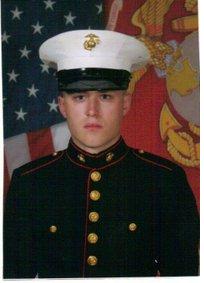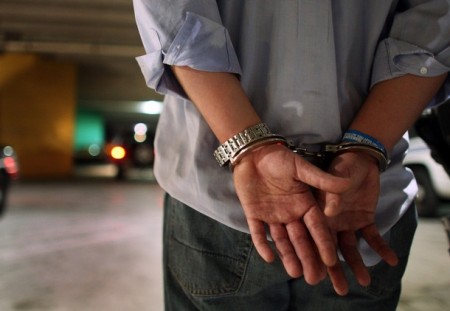The booze was flowing Halloween night in the Camp Pendleton barracks, but the party ended early for one young Marine overcome by potent cocktail “bombs” made of liquor and caffeinated energy drinks. Lance Cpl. Sean Conley, a 23-year-old helicopter mechanic, had been helped to his room by friends after he started feeling ill, his father said. But the Marine was later found on a bench on the barracks veranda, unconscious. Results of toxicology tests revealed that Conley drank himself to death that night.
His family back in Green, Ohio, had been worried about the Marine’s impending deployment to Afghanistan. “The fighting going on, that was the biggest concern for us — that he would get his foot blown off,” his father Steven Conley said. “We prayed for him a lot,” but when it came to his safety and welfare, “we never thought of alcohol,” Conley said.
Despite efforts in recent years to redefine a long-standing culture of heavy drinking and to force alcohol-dependent Marines into treatment, the Corps continues to struggle with alcohol abuse in its ranks. In the first half of 2010 and most of the three previous years, the Marine Corps had the highest rate of new cases of alcohol dependence or chronic alcoholism among all branches of the armed forces, according to a report by the Pentagon’s Armed Forces Health Surveillance Center and the Defense Centers of Excellence for Psychological Health and Traumatic Brain Injury.
Last year, nine Marines died in alcohol-related motor vehicle accidents, including seven who were at the wheel and two who were passengers, the Marine Corps reported. One of the latest accidents this year claimed Lance Cpl. Andrew T. Tjhung, a 19-year-old Camp Pendleton Marine riding passenger with another Marine who was arrested on suspicion of driving under the influence. The last two fiscal years saw the highest numbers of alcohol-related injuries among Marines since 2005 — 114 incidents in 2010 and 118 in 2009, according to the Naval Safety Center. The good news is that the number of Marines killed or totally disabled in alcohol-related vehicular accidents peaked in 2007 at 22 and declined into the low teens in recent years, even as the size of the Corps swelled by 22,000 Marines.
Conley was a member of the 3rd Marine Aircraft Wing’s Marine Light Attack Helicopter Squadron 469. The air wing’s commanding general, Maj. Gen. Thomas Conant said through a spokesman that he views every alcohol-related incident as preventable. The air wing uses a mentoring program and incentives to help units reduce alcohol-related incidents, as well as disciplinary actions against those who break the rules.
Even as binge drinking has become more prevalent among civilian youth, the Corps has tried to temper its long history of alcohol-soaked revelry. The days when commanders kept beer on ice for Marines to imbibe after long marches are over. John Veneziano, a retired Marine and director of Camp Pendleton’s Consolidated Substance Abuse Counseling Center, said the staff saw about 2,100 clients last year for alcohol and substance abuse screenings, including about 36 a week who entered treatment. That is a couple hundred more than their annual average before the war era began in 2001.
When the Corps flew the Conley family to San Diego County this winter, the helicopter mechanic’s buddies wanted to toast his passing with beers at a restaurant. Steven Conley raised his brew in the memory of his son. But he shook his head in disgust when he heard about the party that was to follow.“My son just died from alcohol poisoning, and they’re having a party afterwards to go out and get drunk?” he said. “That’s when it hit me. … They don’t even see it.”
And he is SO right. They don’t see it which is why family members should insist that a Cleared2Drive unit be installed in their vehicle.



You must be logged in to post a comment.